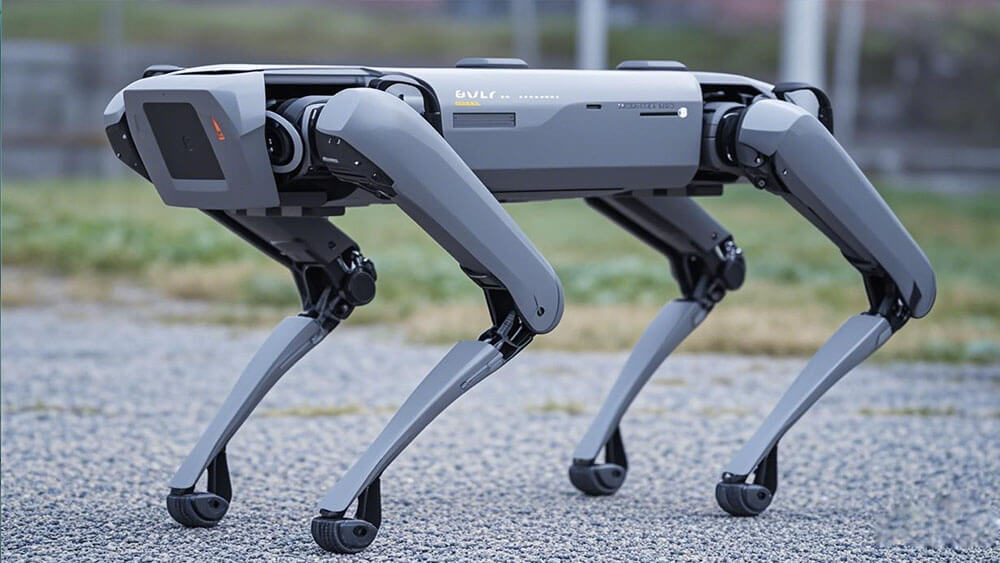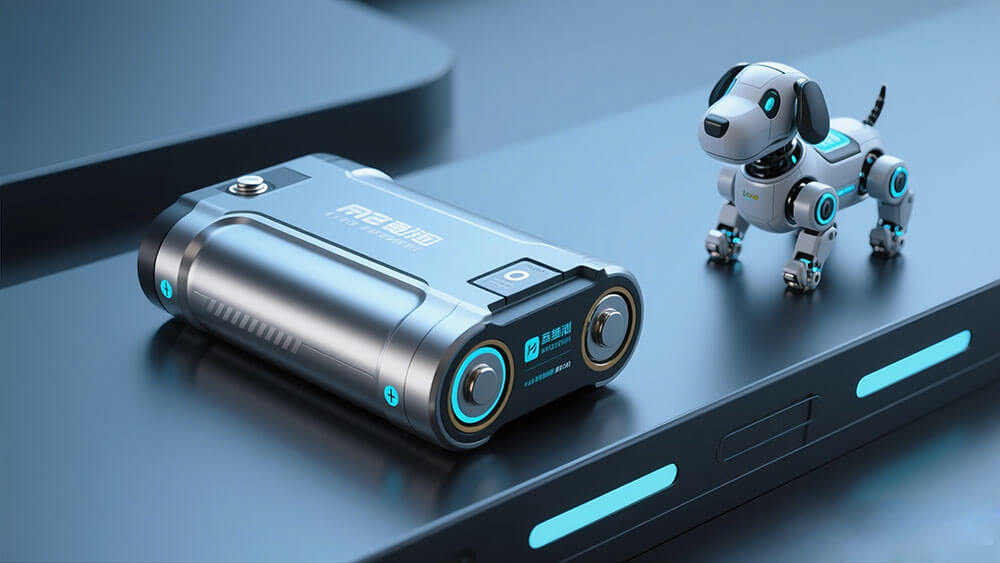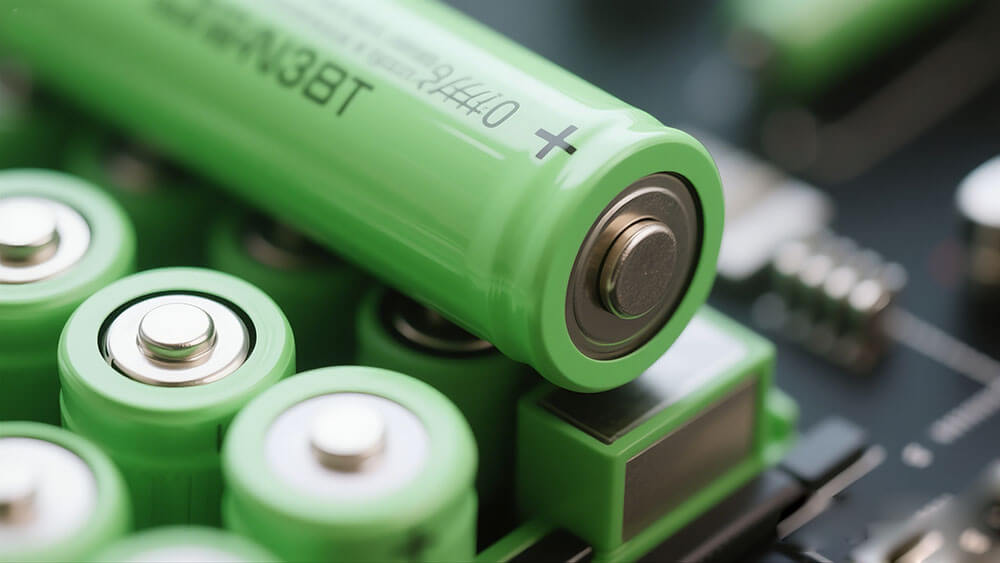Contents

When choosing the best robot dog lithium battery, you must consider energy needs, safety, and compatibility. For instance, a robot dog like the Firefighting Robot with a battery capacity of 8,000mAh and an optional upgrade to 15,000mAh, ensuring stable performance at 28.8V. Selecting the right battery enhances efficiency and operational reliability.
Key Takeaways
Think about how much energy your robot dog needs. Check how much power it uses during tasks and in different environments to pick the right battery.
Focus on safety features in lithium batteries. Choose ones with safety approvals and protection circuits to avoid risks.
Ask experts for custom battery options. Custom batteries can improve size, voltage, and power to fit your robot dog’s needs.

Part 1: Robot Dog Lithium Battery Energy Needs
1.1 Power Consumption in Robot Dogs
Understanding the power consumption of robot dogs is essential for selecting the right battery. These robotic systems rely on lithium batteries to perform complex tasks such as walking, running, and interacting with their environment. Each activity demands varying levels of energy, which directly impacts the battery’s performance and lifespan.
For instance, a robot dog equipped with a lithium battery rated at 51.8V and 18,000mAh can deliver a rated energy of 932.4Wh. This configuration supports up to 5 hours of standby endurance and 2 hours of continuous walking. However, factors like load weight, terrain flatness, and ambient temperature can influence these metrics. You must evaluate these variables to ensure the battery meets the robot’s energy needs effectively.
1.2 Factors Affecting Battery Requirements
Several factors determine the battery requirements for robot dogs. These include the energy demands for untethered autonomous operation, the cost of transport derived from biological systems, and the integration challenges of battery materials under different conditions. High energy density is critical for meeting the power needs of compact robotic systems.
To ensure optimal performance, you should consider the following:
The robot’s operational tasks and their energy consumption.
Environmental conditions such as temperature and humidity.
The weight and size of the battery, which affect the robot’s mobility.
The durability and reliability of the battery under prolonged use.
Conducting accelerated aging tests and utilizing simulation tools can help predict battery behavior in various scenarios. Documenting lifetime capacity and energy metrics also provides valuable insights for selecting the most suitable battery for your robot dog.
1.3 Matching Lithium Batteries to Robot Dog Specifications
Matching the right lithium battery to your robot dog involves aligning the battery’s specifications with the robot’s operational requirements. For example, a robot dog designed for industrial applications may require a LiFePO4 Lithium battery due to its high cycle life of 2,000 to 5,000 cycles and energy density of 100–180Wh/kg. On the other hand, a robot dog used for consumer electronics might benefit from an NMC Lithium battery, which offers a higher energy density of 160–270Wh/kg and a cycle life of 1,000 to 2,000 cycles.
When selecting a battery, focus on the following parameters:
Battery Capacity and Voltage: Ensure the battery provides sufficient energy to power the robot’s functions without interruptions.
Energy Density: Choose a battery with a high energy density to maximize performance while minimizing weight.
Cycle Life: Opt for a battery with a long cycle life to reduce replacement frequency and operational costs.
By aligning these factors with your robot dog’s specifications, you can enhance its efficiency and reliability. For tailored solutions, consider consulting experts like Large Power, who specialize in custom battery solutions for robotics.

Part 2: Types of Lithium-Ion Batteries for Robot Dogs
2.1 LiFePO4 Lithium Battery Advantages
LiFePO4 Lithium batteries are a popular choice for robot dogs due to their exceptional durability and safety. These batteries offer a platform voltage of 3.2V and an energy density ranging from 100 to 180Wh/kg. Their cycle life, which spans 2,000 to 5,000 cycles, ensures long-term reliability, making them ideal for applications requiring frequent charging and discharging.
The thermal stability of LiFePO4 batteries enhances safety, reducing the risk of overheating during intensive robotic operations. This feature is particularly beneficial for industrial robot dogs operating in high-demand environments. Additionally, their lower self-discharge rate ensures consistent performance, even during extended periods of inactivity. For businesses prioritizing sustainability, LiFePO4 batteries align with eco-friendly practices.
2.2 NMC Lithium Battery Applications
NMC Lithium batteries are known for their high energy density, ranging from 160 to 270Wh/kg, and a platform voltage of 3.5–3.6V. These characteristics make them suitable for robot dogs used in consumer electronics and lightweight applications. With a cycle life of 1,000 to 2,000 cycles, NMC batteries strike a balance between performance and longevity.
Their compact design and energy efficiency make them a preferred choice for robots requiring extended operational hours without compromising mobility. For example, robot dogs designed for security systems benefit from the lightweight nature of NMC batteries, enabling agile movement and prolonged surveillance capabilities.
2.3 Comparing Lithium-Ion Battery Chemistries
When selecting lithium-ion batteries for robot dogs, understanding the differences between chemistries is crucial. LiFePO4 batteries excel in safety and cycle life, making them suitable for heavy-duty and industrial applications. In contrast, NMC batteries offer higher energy density, catering to compact and lightweight designs.
Battery Type | Platform Voltage | Energy Density (Wh/kg) | Cycle Life (Cycles) |
|---|---|---|---|
LiFePO4 | 3.2V | 100–180 | 2,000–5,000 |
NMC | 3.5–3.6V | 160–270 | 1,000–2,000 |
Selecting the right battery chemistry depends on your robot dog’s operational requirements. For tailored solutions, consult experts like Large Power. Request a custom battery consultation here.

Part 3: Key Considerations for Lithium Battery Selection
3.1 Battery Capacity and Voltage
Battery capacity and voltage are critical factors when selecting a power source for your robot dog. Capacity, measured in milliampere-hours (mAh), determines how long the battery can sustain operations, while voltage ensures compatibility with the robot’s electrical system. For example, a robot dog requiring 28.8V for optimal performance would need a lithium battery with a matching voltage to avoid inefficiencies or potential damage.
When evaluating capacity, consider the robot’s energy consumption during tasks like walking, running, or carrying loads. A higher capacity battery, such as one rated at 18,000mAh, can support extended operational hours. However, excessive capacity may increase weight, impacting mobility. Voltage compatibility is equally important. Mismatched voltage can lead to reduced performance or even system failure. Always verify the robot’s voltage requirements before finalizing your choice.
3.2 Weight and Size Optimization
The weight and size of the battery directly influence the robot dog’s agility and efficiency. Compact and lightweight batteries are essential for maintaining the robot’s balance and maneuverability, especially in applications requiring high mobility, such as security systems. For instance, NMC Lithium batteries, with their high energy density of 160–270Wh/kg, offer a lightweight solution without compromising energy output.
To optimize weight and size, prioritize batteries with advanced chemistries like LiFePO4 or NMC. These options provide a balance between energy density and physical dimensions. Additionally, custom battery designs tailored to your robot’s specifications can further enhance performance. Collaborating with experts like Large Power ensures you receive a solution that aligns with your operational needs.
3.3 Safety Features in Lithium Batteries
Safety is paramount when selecting lithium batteries for robotics. Advanced safety features protect both the robot and its surroundings from potential hazards like overheating, short circuits, or overcharging. Certifications such as UN 38.3 and MSDS validate a battery’s safety and reliability. These certifications involve rigorous testing phases, including thermal, vibration, and impact tests, ensuring the battery meets international safety standards.
Certification Type | Phase | Duration | Key Activities | Notes |
|---|---|---|---|---|
UN 38.3 | Testing | 4-8 weeks | Thermal, vibration, and impact testing | Longest phase; sequential testing required |
MSDS | Review | 1-2 weeks | Safety expert review, legal compliance check | Final verification phase |
When evaluating safety features, look for batteries with built-in protection circuits. These circuits prevent overcharging and overheating, extending the battery’s lifespan. Additionally, consider batteries with a low self-discharge rate, which ensures stable performance during extended periods of inactivity.
3.4 Rechargeability and Cycle Life
Rechargeability and cycle life determine the long-term cost-effectiveness and sustainability of lithium batteries. Cycle life refers to the number of charge-discharge cycles a battery can endure before its capacity significantly degrades. For robot dogs, a high cycle life reduces the frequency of replacements, lowering operational costs.
LiFePO4 Lithium batteries, with a cycle life of 2,000–5,000 cycles, are ideal for applications requiring frequent charging. In contrast, NMC Lithium batteries offer a balance between cycle life (1,000–2,000 cycles) and energy density, making them suitable for lightweight and compact designs. Research highlights that lithium-ion batteries maintain up to 90% of their capacity even at -20°C, ensuring reliable performance in diverse environments.
Specific energy levels can reach up to 850Wh/kg, supporting extended operational hours.
Advanced chemistries enable rapid recharging, minimizing downtime.
Predictive modeling tools like BatLiNet enhance understanding of battery aging, aiding in better selection.
By prioritizing batteries with high rechargeability and cycle life, you can ensure your robot dog operates efficiently over its intended lifespan. For tailored solutions, consult experts like Large Power.
FAQ
1. How do you determine the best lithium battery for your robot dog?
Evaluate energy needs, voltage compatibility, and cycle life. Consult experts for tailored solutions. Request a custom battery consultation from Large Power.
2. What makes LiFePO4 batteries ideal for industrial robot dogs?
LiFePO4 batteries offer high cycle life (2,000–5,000 cycles), thermal stability, and eco-friendly features. These qualities ensure durability and safety in demanding environments.
3. Can you customize lithium batteries for specific robot dog models?
Yes, custom solutions optimize capacity, voltage, and size for your robot’s needs. Collaborate with Large Power for tailored designs.





